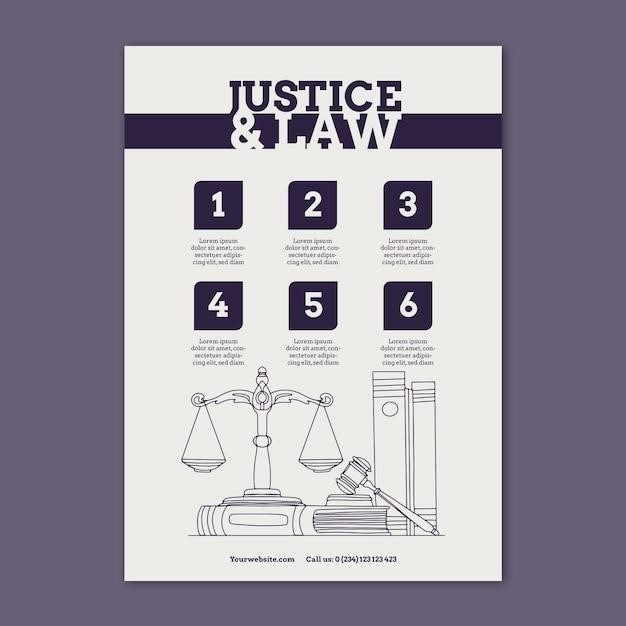The 613 Mitzvot⁚ An Overview
The Torah’s 613 mitzvot, or commandments, are central to Jewish life. These laws, encompassing various aspects of life, are detailed in numerous resources. Maimonides famously categorized them, offering a systematic framework for understanding these divine precepts. Accessing and studying these laws remains crucial for Jewish practice and identity.
The Origin and Significance of the 613 Commandments
The concept of 613 mitzvot (commandments) isn’t explicitly stated in the Torah itself. While the Torah contains numerous laws, the specific number 613 emerged later in rabbinic literature. The Talmud mentions this figure, but its definitive enumeration and categorization are credited to Maimonides (Rambam) in his monumental work, Mishneh Torah. His systematic approach significantly influenced subsequent understanding and interpretation of these commandments. The 613 mitzvot are not merely a list of rules; they represent a covenant between God and the Jewish people, shaping their relationship with God and the world. This framework provides a structure for Jewish life and guides ethical and spiritual development. Many PDFs available online offer various interpretations and analyses of these commandments, reflecting diverse perspectives within Judaism. The significance of the 613 mitzvot lies in their comprehensive guidance for living a life aligned with Jewish values and tradition.
Maimonides’ Categorization of the 613 Mitzvot
Maimonides, in his Mishneh Torah, meticulously organized the 613 mitzvot into fourteen categories, providing a structured approach to understanding the vast scope of Jewish law. This systematization wasn’t merely a numerical exercise; it illuminated the interconnectedness of the commandments and their underlying principles. His categorization facilitates a deeper comprehension of the ethical, ritual, and social dimensions of Jewish observance. Many online PDFs dedicated to the 613 mitzvot often utilize or reference Maimonides’ framework. This provides readers with a clear understanding of how each commandment relates to broader themes within Jewish thought. By categorizing the commandments, Maimonides clarified the relationships between seemingly disparate laws, revealing a cohesive system of divine instruction. His work remains a cornerstone of Jewish legal scholarship and a valuable resource for anyone seeking to understand the 613 mitzvot in their totality. Understanding his categories is key to grasping the overall structure and philosophical underpinnings of Jewish law.
Positive vs. Negative Commandments (Mitzvot Aseh and Mitzvot Lo Taaseh)
The 613 mitzvot are traditionally divided into two main categories⁚ mitzvot aseh (positive commandments) and mitzvot lo taaseh (negative commandments). Mitzvot aseh prescribe actions to be performed, such as observing Shabbat or giving charity. These actively engage the individual in fulfilling God’s will. Conversely, mitzvot lo taaseh prohibit specific actions, like stealing or murder. They define boundaries and limitations, ensuring ethical conduct. Many online PDFs detailing the 613 mitzvot clearly delineate these two categories, often providing separate lists or color-coding for easier reference. This distinction is crucial for understanding the multifaceted nature of Jewish law, emphasizing both active participation in religious practice and avoidance of harmful actions. The balance between these two types of commandments underscores the holistic approach to living a righteous life within Jewish tradition. This clear division aids in systematic study and comprehension of the extensive body of Jewish law.

Accessing and Understanding 613 Laws PDFs
Numerous online resources offer PDFs detailing the 613 mitzvot, providing various interpretations and commentaries. These digital resources offer convenient access to this complex body of Jewish law, facilitating study and understanding for individuals worldwide.
Availability of Online Resources
The digital age has significantly impacted access to information regarding the 613 mitzvot; Numerous websites and online libraries offer downloadable PDFs containing comprehensive lists and explanations of these commandments. These resources vary in their approach, some providing simple listings, others offering detailed commentaries and interpretations from various rabbinic traditions. The availability of these PDFs democratizes access to this fundamental aspect of Jewish law, making it readily available to anyone with an internet connection, regardless of geographical location or access to physical texts. Users can find versions in different languages and formats, catering to diverse learning styles and preferences. This readily available digital access contributes to a wider understanding and engagement with Jewish legal tradition globally. The ease of searching and downloading these documents allows for convenient study and comparison across different interpretations. However, it’s crucial to evaluate the source’s reliability and authority, ensuring the information aligns with established Jewish scholarship.
Interpretations and Commentaries on the 613 Mitzvot
Many online PDFs dedicated to the 613 mitzvot offer diverse interpretations and commentaries. These range from straightforward listings to in-depth analyses exploring the historical, legal, and ethical dimensions of each commandment. Some resources focus on specific schools of thought within Judaism, highlighting the varied approaches to understanding and applying these laws. Others adopt a more contemporary lens, examining the relevance of these ancient precepts in modern life. The availability of multiple perspectives enriches the understanding of the 613 mitzvot, allowing for a nuanced and multifaceted engagement with Jewish law. These commentaries often delve into the complexities of textual interpretation, exploring different approaches to understanding the original Hebrew and the context within which these commandments were revealed. Readers can find resources that provide both traditional and modern interpretations, reflecting the ongoing evolution of Jewish thought and practice. Careful consideration of the author’s background and perspective is vital when navigating these varied interpretations.
Practical Applications and Contemporary Relevance
While originating in ancient times, the 613 mitzvot retain significant contemporary relevance. Many PDFs explore how these commandments apply to modern life, addressing issues such as ethical decision-making, social justice, and environmental responsibility. Discussions often focus on adapting traditional interpretations to contemporary challenges, fostering thoughtful consideration of their practical implications. For example, dietary laws are examined in the context of modern food production and labeling, while laws concerning social justice are applied to current issues of inequality and discrimination. The exploration of these applications fosters a deeper understanding of the enduring wisdom embedded within these ancient precepts, enabling individuals to integrate these teachings into their daily lives in meaningful ways. The ongoing relevance of these commandments speaks to their enduring capacity to guide ethical conduct and promote a just and compassionate society. Accessing various perspectives allows for a more comprehensive understanding of their application in the modern world.

The 613 Mitzvot in Jewish Practice
Exploring the 613 mitzvot through readily available PDFs allows for a deeper understanding of their role in daily Jewish life, across various movements and interpretations. These resources illuminate their significance in shaping Jewish identity and observance.
Daily Life and Observance
Accessing and utilizing online PDFs detailing the 613 mitzvot offers practical guidance for daily Jewish life. These resources provide detailed explanations and interpretations of the commandments, helping individuals understand their relevance in contemporary settings. For example, understanding dietary laws (kashrut) becomes simpler with access to clear explanations and charts. Similarly, observing Shabbat and holidays is enhanced by readily available information on relevant laws and customs. The PDFs often include practical advice on how to incorporate mitzvot into daily routines, from prayer and blessings to acts of charity and ethical conduct. This approach facilitates a deeper connection to Jewish tradition and promotes a more meaningful observance of Jewish law. The accessibility of these digital resources democratizes access to this important knowledge, removing barriers to understanding and practice, regardless of location or access to traditional learning opportunities. These PDFs often include cross-references to relevant passages in the Torah and Talmud, encouraging further exploration and study.
Different Jewish Movements and Interpretations
The interpretation and observance of the 613 mitzvot vary significantly across different Jewish movements. Online PDFs, while offering a comprehensive overview, often highlight these diverse approaches. Orthodox Judaism maintains a strict adherence to all 613 mitzvot, with detailed halakhic rulings guiding their observance. Conservative Judaism generally follows traditional interpretations but allows for greater flexibility in practice, particularly in areas where modern life presents challenges. Reform Judaism emphasizes the ethical and moral principles underlying the mitzvot, often prioritizing certain commandments while re-interpreting or adapting others to suit modern contexts. These differing interpretations are often reflected in the commentaries and explanations found within the various 613 mitzvot PDFs available online. Understanding these varied perspectives is crucial for appreciating the richness and complexity of Jewish law and its evolution throughout history. Access to these diverse interpretations online promotes greater understanding and tolerance between different Jewish communities and their varied approaches to Jewish life.
The Role of the 613 Mitzvot in Jewish Identity
The 613 mitzvot are foundational to Jewish identity, shaping individual and communal life. Engagement with these commandments, whether through study of PDFs or direct observance, fosters a deep connection to Jewish history, tradition, and spirituality. The process of grappling with the complexities of halakha (Jewish law) contributes significantly to personal growth and a strengthened sense of belonging within the Jewish community. Different approaches to observing the mitzvot, as reflected in the varied interpretations found online and in traditional texts, contribute to a rich tapestry of Jewish experience. Furthermore, the ongoing dialogue and debate surrounding the application of these laws in contemporary society keeps the tradition vibrant and relevant. For many, striving to live a life guided by these precepts is a powerful expression of Jewish identity, linking them to generations past and inspiring a commitment to ethical living and social justice. This commitment to the 613 mitzvot underscores the enduring relevance of Jewish law in shaping individual and collective identities.
